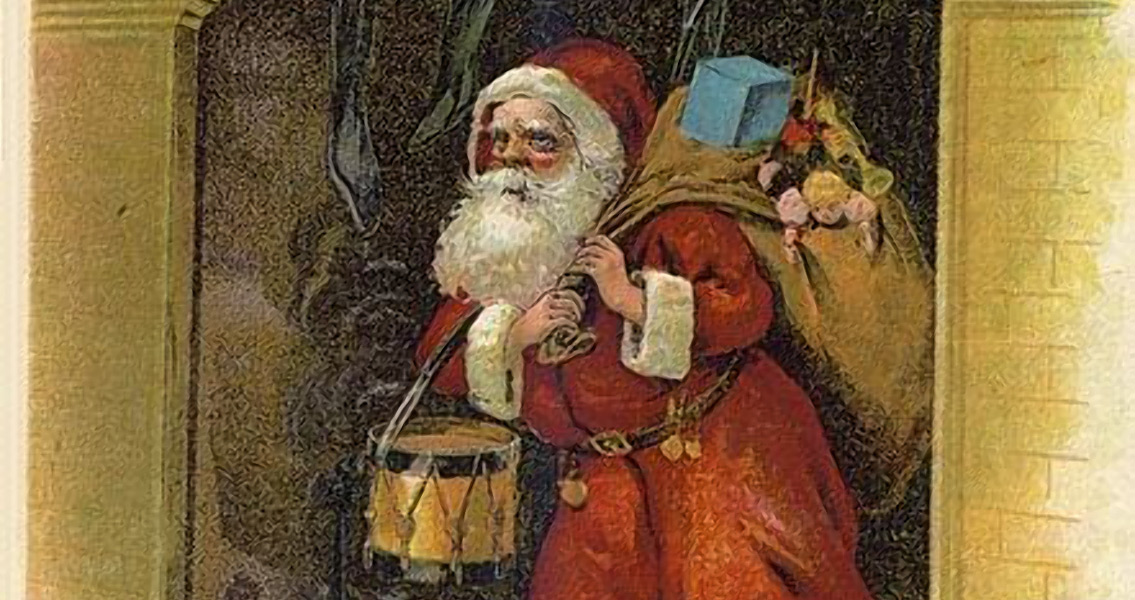<![CDATA[Along with the nativity story, a large, white bearded man in a red suit is probably the most readily associated image with Christmas. Whether called Santa Claus, Father Christmas or Saint Nicholas, the idea of a gift giving, sleigh riding, reindeer owning man climbing down chimneys is one which encapsulates the romance of Christmas, especially for excited children. Seemingly completely detached from the biblical story which is the basis of festive celebrations, the origins of the modern Santa Claus stretch all the way back to the third century CE. St. Nicholas was a monk, who it is believed was born sometime around 280 CE, in what is modern day Turkey. Admired for his piety, legends claim that St. Nicholas gave away his wealth and spent his life travelling the countryside helping the sick and poor. Stories range from him using his riches to save three sisters from being sold into slavery, to resurrecting three murdered children. His reputation as a hero was further enhanced by his brave defence of Christianity. During the 'Great Persecution' of Christians by the Romans, he was imprisoned for his acts of defiance, refusing to renounce his faith even under threat of death. Following his death the legend of St. Nicholas continued to grow and spread, the tales of charity leading to him becoming the saint of sailors and children. The 6th December, the supposed anniversary of Nicholas' death, was celebrated throughout Europe. By the time of the Renaissance, St. Nicholas was the most popular saint on the continent, his positive reputation continuing even after the Reformation, when the veneration of saints started to be discouraged. . Of course, a pious saint from Turkey has little connection to the North Pole. In the years since the Reformation, the image of St. Nicholas changed drastically, as various myths started to cross over. In post-Reformation Northern Europe, Christmas myths started to form around the baby Jesus bringing gifts to good children. Germanic societies started to create mythical fairy tale creatures who acted as Jesus' assistant, delivering the gifts and issuing threats to bad children. Some of these fairy tale creatures, such as Aschenklas and Ru-Klaus, increasingly came to be based on St. Nicholas. This mixture of folk story and Christian Doctrine eventually spread to North America in the waves of European migration, and helped inspire a movement at the turn of the nineteenth century to turn Christmas into a much more family orientated event. Washington Irving described a pipe smoking St. Nicholas flying a sleigh over New York in his 'Knickerbocker's History of New York'. An anonymous 1821 poem, 'The Children's Friend', went further, making Santa Claus a gift bringer comparable to modern descriptions of him. In the poem, St. Nicholas the saint is fused with the ragged, fur wearing characters from the Northern European fairy tales. The following year, Clement Clarke Moore's 'The Night Before Christmas' added reindeer to the myth, and suddenly the modern Santa Claus started to take shape. The poem proved hugely popular, and helped cement ideas of Christmas as a children focused family occasion. By the late 1920s, the familiar 'American Santa' - an ample man in a red, fur trimmed suit, had been created and widely circulated in the works of various illustrators in the USA. In 1931, this image started to be used in Coca Cola advertising campaigns created by Haddon Sundblom. Matching the path of globalisation, America's Santa soon went international, along with the drink his image was used to promote. ]]>
From Turkey to Coca Cola – The History of Santa Claus
